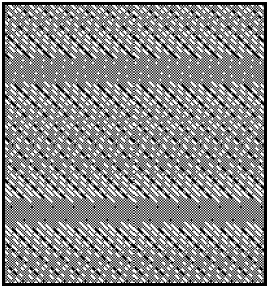Tabby Twill
This scheme creates a blend of
tabby and twill. The illustrations
on the left show horizontal bands
of nearly pure tabby separated
by bands of twill-like regions.
The examples shown here were
selected because they show the
“tabby & twill” effect clearly;
many of the fabrics generated by
this scheme are more complex
and subtle than those shown
here.



Random Walk Peg Plan;
Twill Overlay Peg Plan;
Slashes Peg Plan;
Tabby Twill Peg Plan;
Twill Walk Peg Plan;